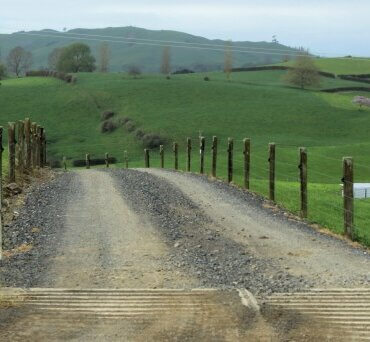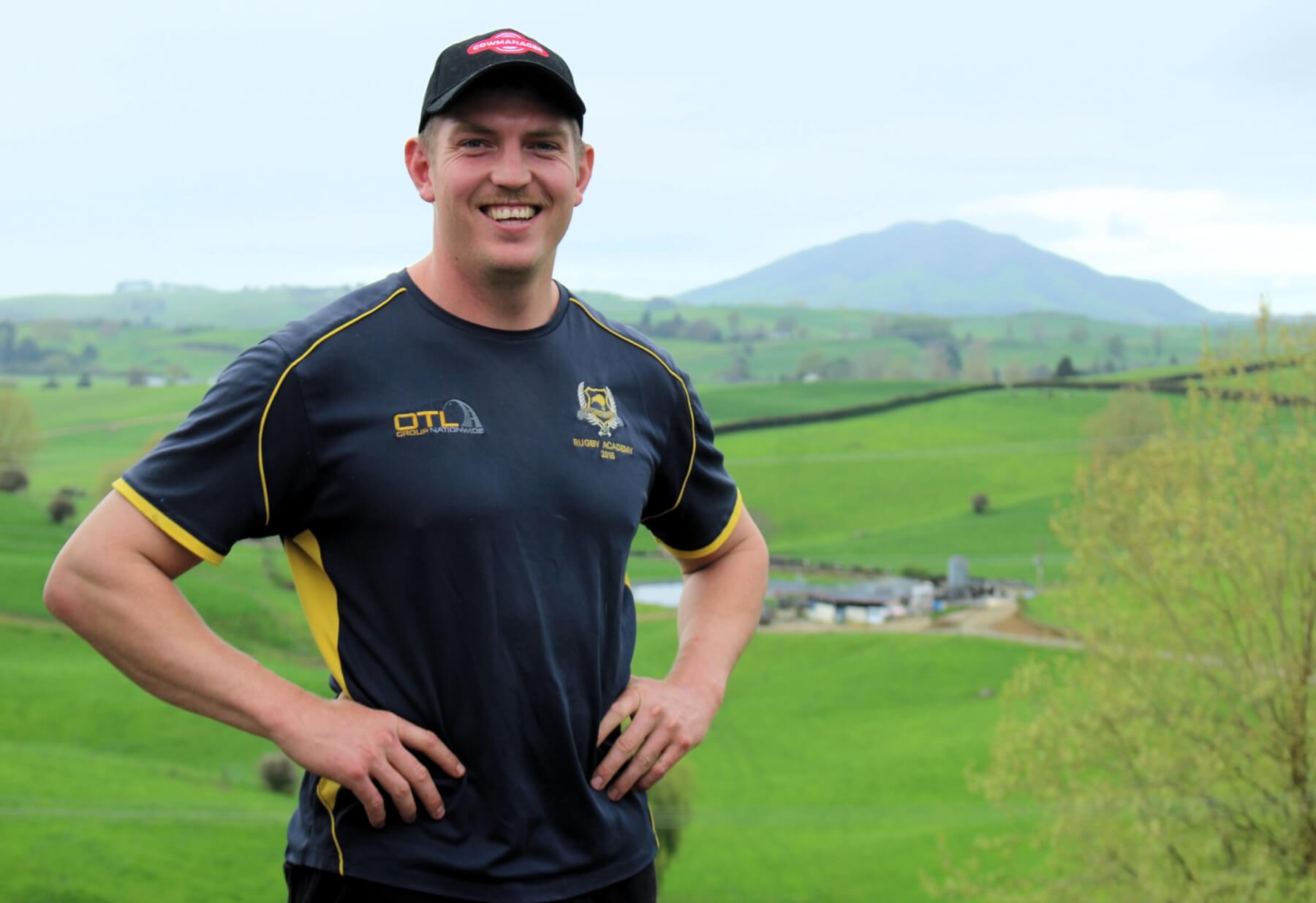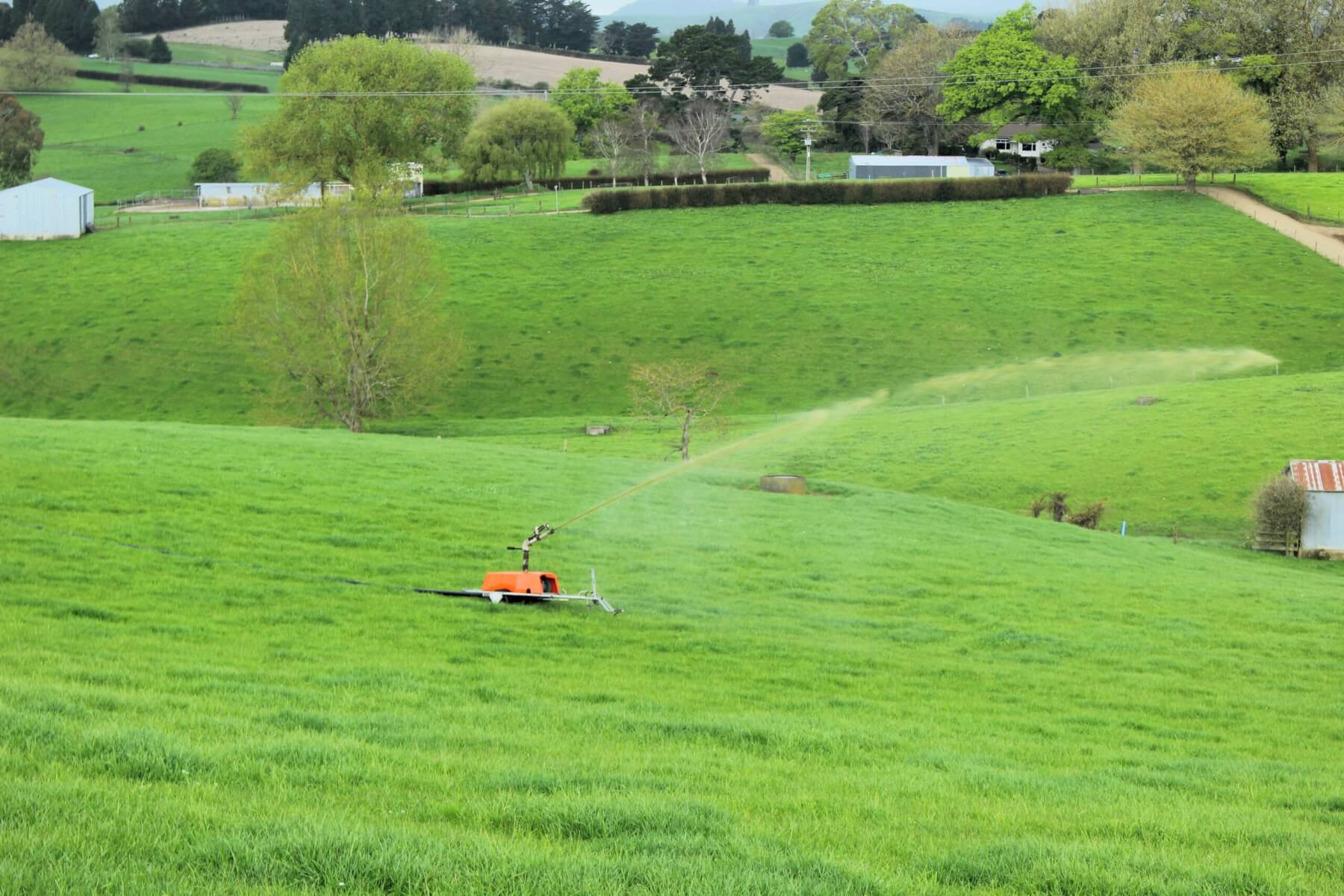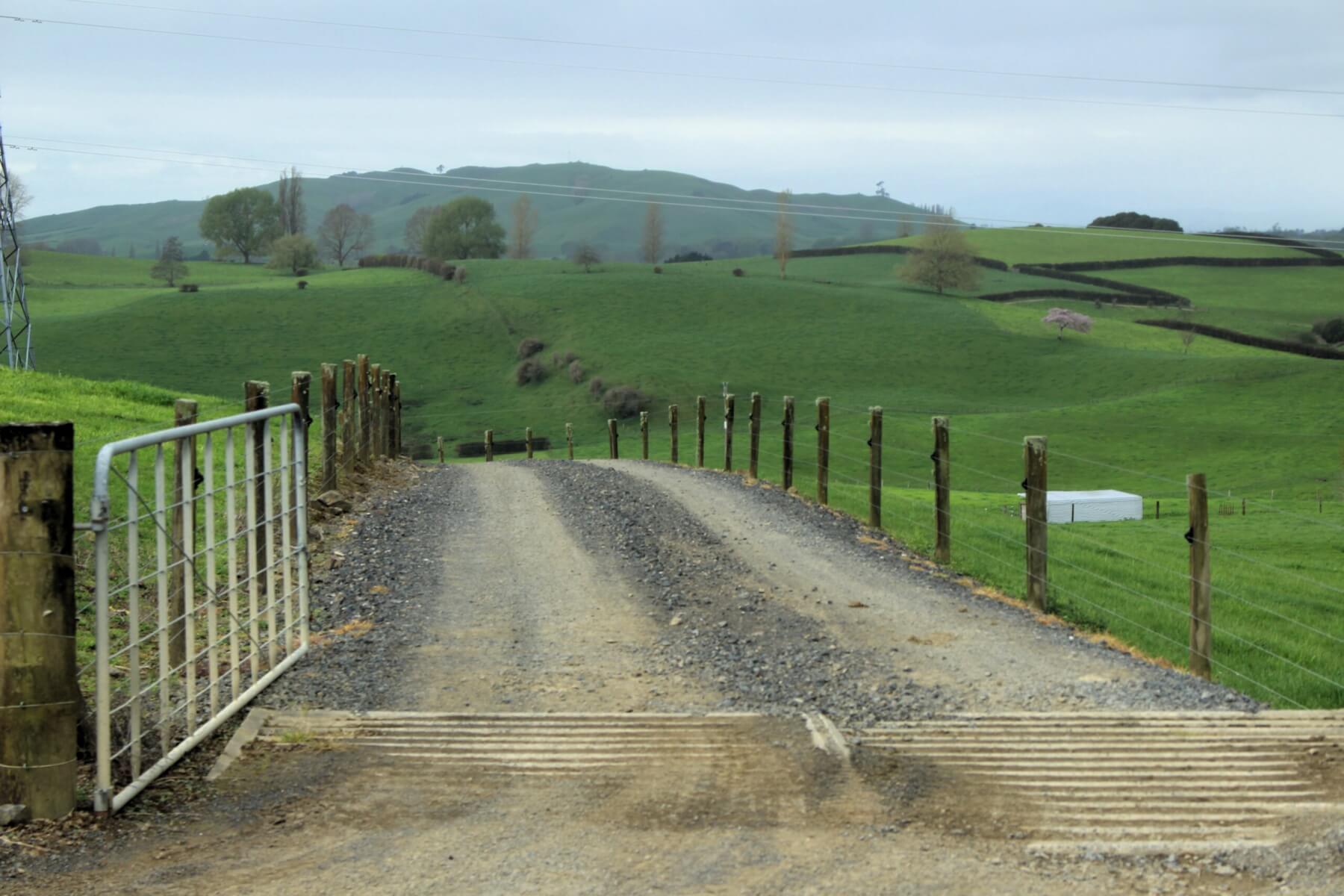
This time last year, Chris Ferguson was doing his first cut of silage.
There are mixed reviews from farmers across the greater Waikato region, following the transition from a drought to high rain fall.

Ōtorohanga sharemilker Chris Ferguson said farmers are starting to prepare for drier summers. Photo: Jesse Wood
Kaipaki farmer Zane Kite said the drought was devastating.
“We took a financial hit. It was hard on the animals and on the humans trying to look after the animals,” Kite said.“I did dry off a month earlier, to look after the animals and I think I’m benefitting from that now. “
“You put it behind you and move forward. Spring has been pretty kind to us this year.”
Kite said it’s been an “easy spring” so far.
“There’s not much mud, so that’s been a blessing,” Kite said.
“Production is up compared with last year. We’ve got pretty good grass cover and the cows are in good nick.”
Waikato Regional Council figures show Te Awamutu had 153mm of rain, Te Kūiti 179mm, Waitanguru 352mm, Otewa 203mm and Hamilton 134mm in the 30 days to Monday this week.
For Hamilton that compared to a September average of 100mm and for Te Kuiti 133mm. Much of that rain came in very heavy bursts.
Down the road in Ōhaupō, Andrew Reymer echoed Zane Kite’s remarks.
“I went into winter with low feed, but we’re going through one of the best springs we’ve had for a while. Nature has a way of correcting itself,” Reymer said.
Although they’ve had plenty of rainfall, it hasn’t been continuous.
“The drains are full, they’re flowing, but the ground isn’t wet and unmanageable. This time last year, it was slush,” Reymer said.
“Touch wood, it’s a good spring. Hopefully it’ll carry on.”
Roto-o-Rangi farmer Richard Myers said farmers should adapt their systems to work around the weather.
“It’s just weather and we’ve got to take it as it comes. Our whole system exists on sunshine and rain,” Myers said. “We’re quite used to droughts and high rainfall at different times of the year. We can’t control it.”

Ōtorohanga farmers say grass growth is slightly behind.
Ōtorohanga-based sharemilker Chris Ferguson said their maize yield was down due to an early harvest, but they’re starting to adapt.
“Ōtorohanga was about as dry as most places over summer. We went for once-a-day milking to de-stress the cows,” Ferguson said.
“Farmers are starting to prepare for drier summers. They’re looking at hitting 60 to 70 per cent of their production before Christmas – especially farms that don’t buy as much feed in.
“Traditionally, Christmas was your halfway point of your season production.”
Ferguson said they’ve been lucky with the rainfall and don’t get a lot of flooding.
“But we have noticed a little less grass growth. This time last year, we were probably doing our first cut of silage.”
South of Ōtorohanga, Michael Woodward’s farm is also a week behind in grass growth.
“The drought came on a lot faster than usual with the winds in early January. That meant we more of our supplement feed sooner,” Woodward said.
“Coming into winter, we needed to top up the soil moisture levels. We got away with some of the bigger, heavier rains earlier on because the soil was dry and it got soaked up.
“We’re definitely not in a deficit, but more rain is needed to encourage that grass growth going forward.”
Kirwyn Ellis, 2024 New Zealand Dairy Trainee of the Year, said his family farm near Pirongia has bounced back well.
“The dry conditions were certainly testing. The lack of grass growth meant there was a lot of stored nitrogen in the soil. When the rain finally did come in the autumn, it set us up nicely for winter and spring,” Ellis said.
“At times over winter, it did feel like every rain was a weather event. It wasn’t uncommon for the forecasted 50mm to turn into 100mm, particularly for us being in the foothills of Mt Pirongia.
“We had our share of frosts too. We were lucky to be in the feed position we were in May because grass growth over June, July and August was impacted.
“Despite this, we are very grateful to still be in a good position.”

This time last year, Chris Ferguson was doing his first cut of silage. Photo: Jesse Wood








